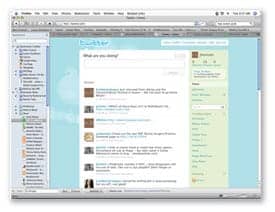 |
You’ve tried LinkedIn (www.linkedin.com), which connects people who have common business interests, and your teenage daughter taught you how to use Facebook (www.facebook.com). What’s next in the evolving 24/7 world of social media? Right now the buzz du jour is around Twitter (www.twitter.com), which tops the list as the single fastest-growing online tool for brand promotion.
Twitter has emerged in record time as a key component of an integrated online marketing and public relations strategy. Twitter appears destined to go down in history as a “game changer” in the way we communicate. For the skeptics out there in the Twitterverse, recall the recent presidential election in Iran, where cell phones and the local Internet were shut down, which gave rise to the populace “tweeting” their anger to the rest of the world. Twitter is a powerful tool indeed, and, at least for the moment, it’s free.
WHY YOU SHOULD CARE
Tweets are messages you post on Twitter. They are similar to cell phone texts in their brevity and use of abbreviations.
In a nutshell, Twitter allows you to broadcast text-based updates of 140 characters or less into the “twittersphere,” which are available to other Twitter users following your activity. The only people who can see your tweets are your “followers.”
Similarly, you can only see the tweets of people you are following. You can also block people from following your tweets. You can send a “direct message” to someone you are following, which can only be read by the recipient. You can search by name or keyword to find people to follow, as well. However, the Twitter search function is notoriously inadequate. If you want to find out what people are saying about your brand, go to search.twitter.com and select tags to monitor your twitterverse.
One downside: Currently, Twitter’s underlying Web-based software is unable to keep up with the “tweet traffic” and will frequently malfunction. You may find yourself trying to update your status and suddenly the process stalls, in which case you are forced to refresh your page multiple times. You may also get the dreaded Twitter curtain screen that simply states, “Twitter is over capacity. Please try again.”
There are so many millions of people on Twitter that if your name is a fairly common one, chances are that multiple variations on it are already taken. For example, johnsmith, john-smith, john_smithmd, drjohnsmith, docjsmith, etc. One of my personal favorite user names is tummytucksrus, which is used by a clinic in England.
KEEP IT SHORT, SIMPLE
For physicians, another challenge of Twitter is that it is not as easy as it seems to formulate full sentences or complete thoughts in 140-character space, especially if you want to sound physician-like. I have found myself revising, editing, and abbreviating many tweets to avoid getting a negative number as my word count.
As you enter your phrase, Twitter counts down from 140 for you, so if you go past zero, extra characters basically will be cut off. Every dot, bar, dash, or space is considered a character and gets deducted from your 140-character allowance.
Twitter is a good place to create buzz and generate exposure, rather than to convey formal concepts. You can include information on your Web site and a brief description of who you are and what you do. Firms (including my own) can be hired to create customized Twitter backgrounds for clients using their own branding.
A new lexicon associated with Twitter includes odd-sounding terms such as “twehab”—a combination of Twitter and rehab—which is what happens to you when Twitter admins disable your account for what seems like unknown reasons. A “twittiot” is someone who tweets incessantly about mundane foolishness, such as “I just finished watching my favorite soap.” And a “tweetup” is like a blind date with fellow twitterers, coined from “hook up,” that vaguest of terms that makes every parent squirm.
As you are reading this, I can guarantee with absolute certainty that lawyers around the world are figuring out how they can sue someone for tweeting proprietary information about a public company, defamatory tweets, tweets that breach privilege, libelous tweeting, etc. We can expect to read signage at airport security checkpoints and government buildings very soon that state, “No tweeting allowed.”
My advice to physicians on how to stay out of trouble is this: If you don’t get it, leave it alone. You could also hire a professional to tweet for you, but please don’t do this during surgery, operating heavy machinery like lasers or Bovies, or while examining a patient.
Wendy Lewis is president of Wendy Lewis & Co Ltd Global Aesthetics Consultancy, the author of 10 books, and can be followed on Twitter at www.twitter.com/wlco. She can also be reached at .





